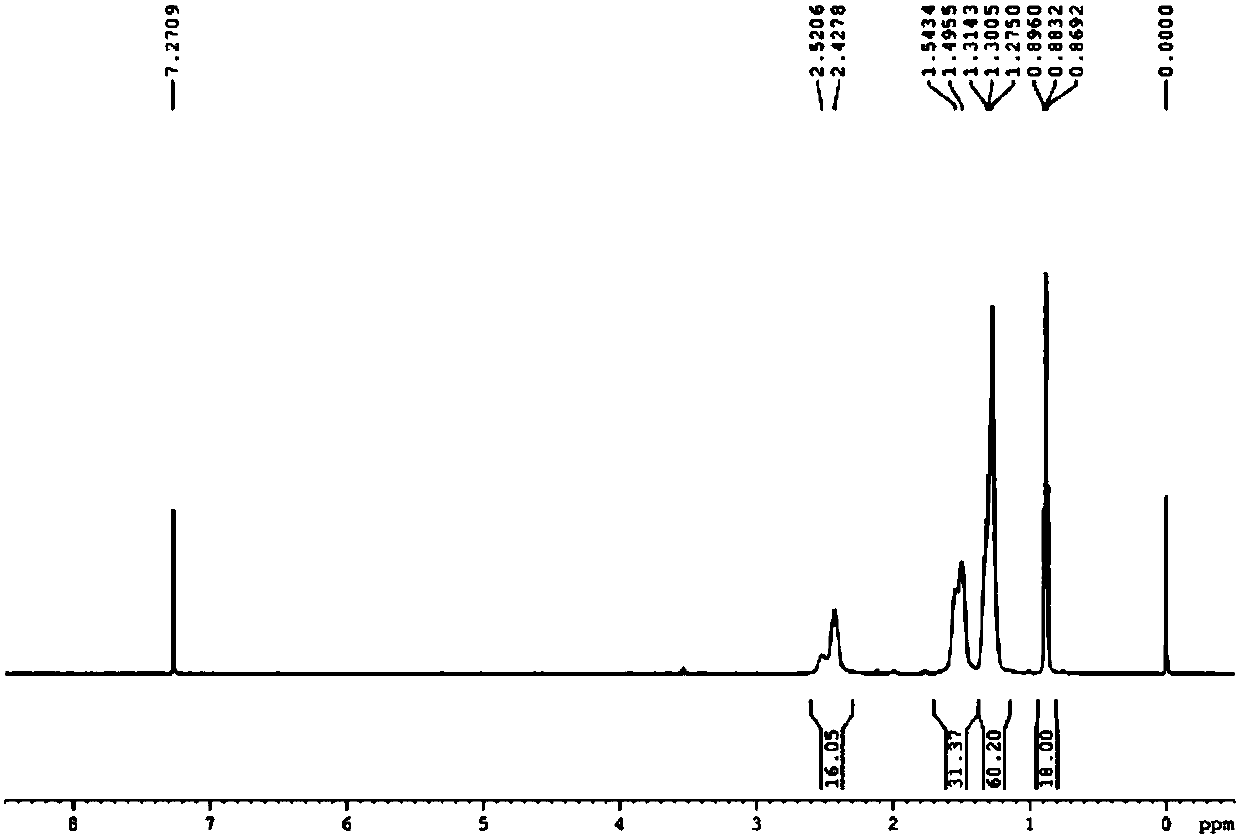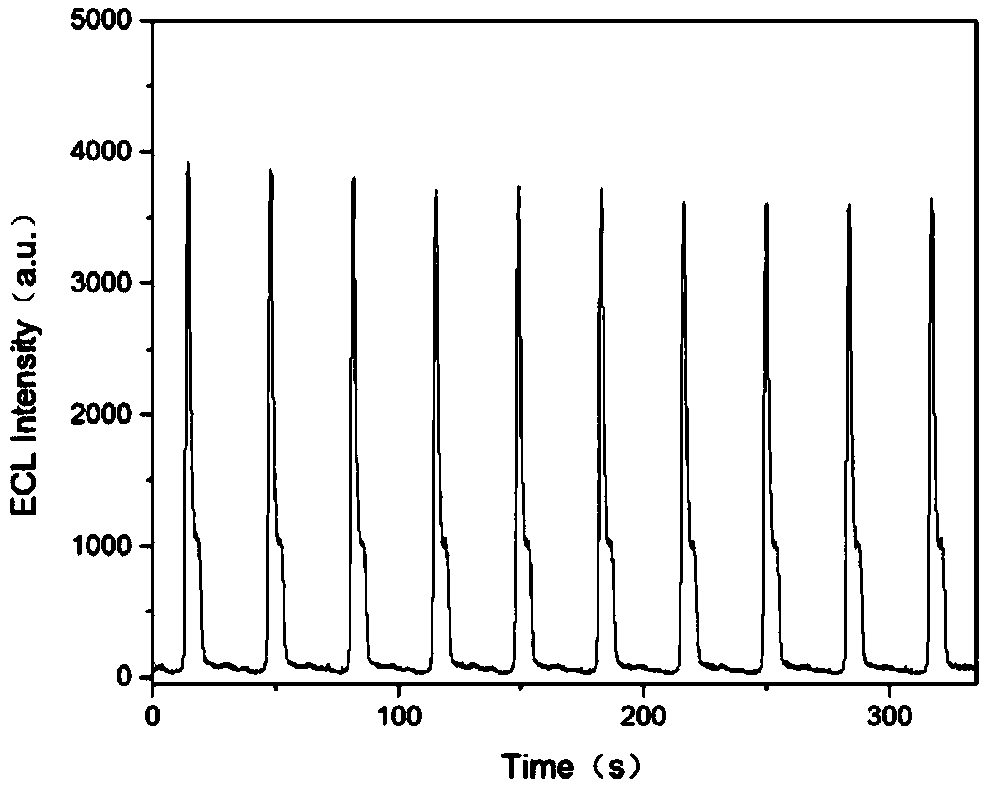Quaternary phosphonium salt compound, preparation method thereof and application thereof in electrochemiluminescence biological detection
A quaternary phosphonium salt and compound technology, applied in the field of electrochemiluminescence materials, can solve the problems of poor electrode surface silence, fluorescence ultraviolet quenching, active monomers and other problems, and achieve stable electrochemiluminescence signal and wide electrochemical window. , high-strength effect
- Summary
- Abstract
- Description
- Claims
- Application Information
AI Technical Summary
Problems solved by technology
Method used
Image
Examples
Embodiment 1
[0030] Add 3.28g (10.0mmol) 1,12-dibromododecane, 8.89g (24.0mmol) trioctylphosphine, and 40mL chloroform to the three-necked flask at room temperature as solvent, and feed N 2 Bubble for 15 minutes to remove oxygen in the three-necked flask, and then reflux and stir at 60° C. for 48 hours under airtight conditions. After the reaction was completed, it was cooled to room temperature, the reactant was transferred to an eggplant-shaped bottle, and the reaction solvent, chloroform, was removed by rotary evaporation. Then add 20mL ethyl acetate, heat to reflux state, keep for 30min, then cool to room temperature and transfer to refrigerator, stand at -20°C for 8-12h. Suction filter and transfer the filter cake to an eggplant-shaped bottle, add ethyl acetate and repeat the above operation twice, transfer the filter cake to a 60°C oven for drying to obtain 8.98g of 1,12-bis(trioctylphosphonium bromide) dodeca Alkanes, the yield is 84%.
Embodiment 2
[0032] Prepare C with a molar concentration of 10mmol / L respectively 12 h 24 (P + (C8 h 17 ) 3 Br - ) 2 -methanol solution and 0.1mmol / L ZnTCPP-methanol solution, ultrasonically oscillate for 10min, then take an equal volume of quaternary phosphonium salt-methanol solution and ZnTCPP-methanol solution to mix and ultrasonically oscillate for 30min to ensure their uniform dispersion. Glassy carbon electrodes with a diameter of 5 mm were polished on 0.3 μm and 0.05 μm alumina suede for 3 minutes respectively. After each polishing, the alumina adsorbed on the electrode surface was rinsed with ultrapure water, and then dried with nitrogen. Use a pipette gun to draw 10 μL of quaternary phosphonium salt / ZnTCPP-methanol mixed solution to modify the surface of the treated glassy carbon electrode, and place it in a dry place away from light to dry naturally to form a thin film layer. The ECL signal of the electrode was detected by the MPI-E multifunctional electrochemical and chem...
Embodiment 3
[0034] Prepare TOAB-methanol solution with a molar concentration of 10mmol / L and ZnTCPP-methanol solution with a molar concentration of 0.1mmol / L respectively, ultrasonically oscillate for 10min, then take an equal volume of TOAB-methanol solution and ZnTCPP-methanol solution and mix and ultrasonically oscillate for 30min to ensure It disperses evenly. Glassy carbon electrodes with a diameter of 5 mm were polished on 0.3 μm and 0.05 μm alumina suede for 3 minutes respectively. After each polishing, the alumina adsorbed on the electrode surface was rinsed with ultrapure water, and then dried with nitrogen. Use a pipette gun to draw 10 μL of TOAB / ZnTCPP-methanol mixed solution to modify the surface of the treated glassy carbon electrode, and place it in a dry place away from light to dry naturally to form a thin film layer. The ECL signal of the electrode was detected by the MPI-E multifunctional electrochemical and chemiluminescence analysis system. The buffer solution is 4mL ...
PUM
 Login to View More
Login to View More Abstract
Description
Claims
Application Information
 Login to View More
Login to View More - R&D
- Intellectual Property
- Life Sciences
- Materials
- Tech Scout
- Unparalleled Data Quality
- Higher Quality Content
- 60% Fewer Hallucinations
Browse by: Latest US Patents, China's latest patents, Technical Efficacy Thesaurus, Application Domain, Technology Topic, Popular Technical Reports.
© 2025 PatSnap. All rights reserved.Legal|Privacy policy|Modern Slavery Act Transparency Statement|Sitemap|About US| Contact US: help@patsnap.com



